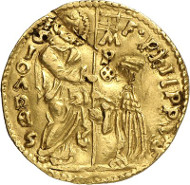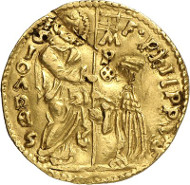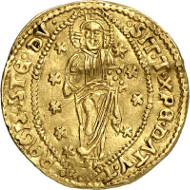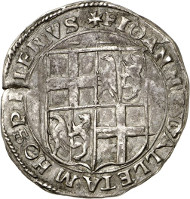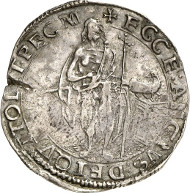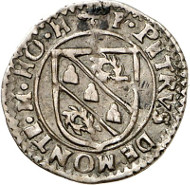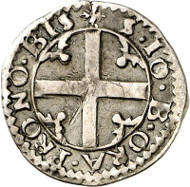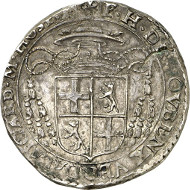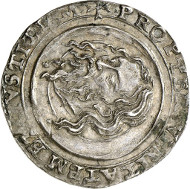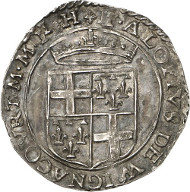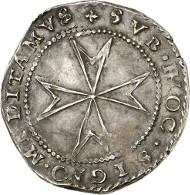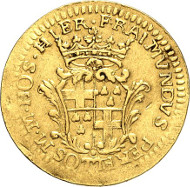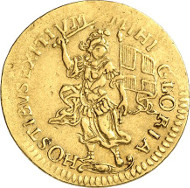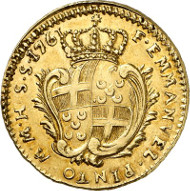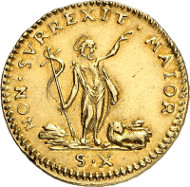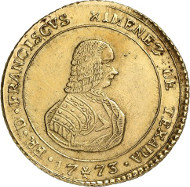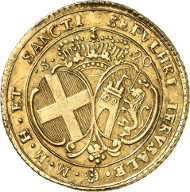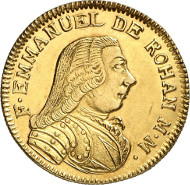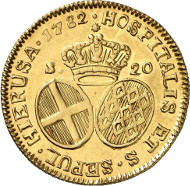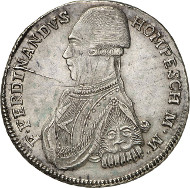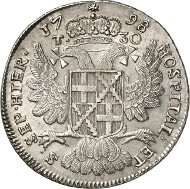Coin Rarities of the Military Order of Malta
Auction house Künker at Osnabrück is going to sell a special collection of coins of The Sovereign Military Order of Malta on 11 March 2014. Roughly 160 lots take us back into an era when the Holy Land was lost but the idea of crusading was still alive in the mind of many people.
Philippe de Villiers was elected Grand Master of The Sovereign Military Order of Malta in 1521. At that time, this Order of Knights was already approximately 400 years old. It traces its founding back to a hospital dedicated to John the Baptist in Jerusalem where pilgrims were accommodated and cared for. After the conquest of Jerusalem in 1099, the local monastic community enjoyed an ever increasing clientele. At the beginning of the 12th century, the order changed from a caring community to a fighting one, whose new order charter was confirmed by Pope Eugene III in 1153. The Knights Hospitallers were very successful. They expanded their influence thanks to donations in entire Christian Europe. But while the Orders of Knights grew and thrived, the Christian baronies in the Holy Land did not. One by one, they fell back to the Moslems. That affected the Hospitallers as well. In 1191, the order relocated to Akko, in 1291 to Cyprus and in 1310 to Rhodes. But the Hospitallers were expelled from there, too. Suleiman the Magnificent wanted to get the Mediterranean region under his control so the strategically important island of Rhodes stood in his path. The fortress fell after a six months’ siege during which 600 Knights and 4,500 armed men are said to have fought the Ottoman forces that comprised as many as 160,000 men.
Philippe de Villiers de l’Isle-Adam, 44th Grand Master, 1521-1534. Zecchino n. d., Malta or Rhodes. Unpublished variety of inscription. Very rare. From auction sale Künker 246 (11/12 March 2014), 2817. Estimate: 3,500 euros.
The zecchino of Philipp de Villiers offered by Künker may well have been produced during the siege of Rhodes, perhaps it was minted already on Malta which the Knights Hospitallers were given by Emperor Charles V as fief of the Spanish crown. Naturally, Suleiman planned to expel the Knights of Malta, as the Order called itself after its new home, from there as well. In 1565, he sent a fleet in excess of 200 battle ships. The new lords of Malta, however, had done their homework and had fortified the island. While Fort St. Elmo fell, the other fortresses, St. Angelo and St. Michael, stood the siege. The Turks were forced to withdraw after a few months’ time.
Jean de la Valette, 49th Grand Master, 1557-1568. 4 tari n. d. Birgu or Fort St. Angelo. The second specimen known and the only one available on the market. From auction sale Künker 246 (11/12 March 2014), 2826. Estimate: 2,000 euros.
In return, the Pope offered Grand Master Jean de la Valette the cardinal hat but the Hospitaller declined with thanks.
The Kingdom Cyprus wasn’t that lucky, though. The Cypriote forts fell one by one to the Ottomans since 1570. The fights about Cyprus triggered a new wave of crusade fever amongst the European rulers. An auxiliary fleet was set up albeit it turned operational only after Cyprus had already fallen. The ships of the Holy League in contrast, which were reinforced by the Maltese fleet, gained a historic victory near Lepanto. That brought a decisive change particularly for the Knights of Malta:
Pietro del Monte, 50th Grand Master, 1568-1572. Cinquina n. d., Birgu or Fort St. Angelo. Presumably the second specimen known. From auction sale Künker 246 (11/12 March 2014), 2849. Estimate: 1,000 euros.
Grand Master Pietro del Monte happily noticed the Ottoman power being limited to the eastern Mediterranean henceforth. Malta became something of a Christian outpost separating the eastern from the western sphere of influence.
It is needless to say, that this came with a significant political appreciation. In 1587, Grand Master Hugues Loubenx de Verdalle was given the papal title of Cardinal Deacon which is likewise mirrored in his coat of arms:
Hugues Loubens de Verdalle, 52nd Grand Master, 1582-1595. 4 tari n. d. (1588-1595). Very rare. From auction sale Künker 246 (11/12 March 2014), 2856. Estimate: 7,500 euros.
The cardinal hat is depicted above the escutcheon of the Grand Master.
Alof de Wignacourt, 54th Grand Master, 1601-1622. 3 Tari n. d., Valetta. Very rare. From auction sale Künker 246 (11/12 March 2014), 2864. Estimate: 1,000 euros.
Alof de Wignacourt was granted the title of Prince of the Holy Roman Empire in 1607 which is reflected by the open crown in his coat of arms. While the island was systematically fortified to virtually become one great fort, the Grand Masters gained more and more autonomy for their Order. They were granted their rich revenues because it was that money that made it possible in the first place to deploy state-of-the-art technology in the fight against the Ottomans.
Ramon Perellos y Roccaful, 64th Grand Master, 1697-1720. 2 zecchini n. d., Valetta. Only specimen available at the market. From auction sale Künker 246 (11/12 March 2014), 2895. Estimate: 10,000 euros.
Ramon Perellos y Roccaful, for example, had coastal batteries armed with artillery installed as well as an extensive entrenchment system built.
Emmanuel Pinto, 68th Grand Master, 1741-1773. 10 scudi 1761, Valetta. Extremely rare. From auction sale Künker 246 (11/12 March 2014), 2932. Estimate: 2,000 euros.
In the middle of the 18th century, Emmanuel Pinto managed to break free from Spanish suzerainty entirely. That was reflected in the princely crown that is depicted on the Maltese coins until the present day, representing the royal position of the Grand Master. The concept of absolutism, however, was contradistinctive to the ideals of an Order of Knights, which ultimately exacerbated the crisis that had arisen by the defeat of the enemy: after all, since the turn of the 18th century, the Turks were much busier with fighting off the Russians than with winning new territories in Europe.
Francisco Ximenez de Texada, 69th Grand Master, 1773-1775. 20 scudi 1773, Valetta. From auction sale Künker 246 (11/12 March 2014), 2946. Estimate: 3,500 euros.
Now, the Order’s yields weren’t spend any more on defense, but on the lavish lifestyle of the Grand Master to the effect that Francisco Ximenez de Texada had to declare the order-state bankrupt.
Emmanuel de Rohan, 70th Grand Master, 1775-1797. 20 scudi 1782, Valetta. From auction sale Künker 246 (11/12 March 2014), 2955. Estimate: 1,500 euros.
Despite all efforts of Emmanuel de Rohan to initiate a turn by returning to old ideals, the time of the Maltese as Christian outpost in Europe drew to a close. In France, the revolution broke out and deprived the Order of all its territories located there.
Ferdinand von Hompesch, 71st Grand Master, 1797-1798, 30 tari 1798, Valletta. From auction sale Künker 246 (11/12 March 2014), 2973. Estimate: 300 euros.
Ferdinand von Hompesch was forced by Napoleon to leave Malta in 1798.
The Order suffered the ultimate defeat in the Congress of Vienna. Great Britain was awarded Malta and Gozo, the expropriations of the order at the benefit of France and the states of the Rhenish Confederation weren’t recalled.
After a phase of realignment, The Sovereign Military Hospitaller Order of Saint John of Jerusalem of Rhodes and of Malta returned to its roots. From its exterritorial properties in Rome, its present goal is to assist those who suffer illness. The order has about 13,500 Dames and Knights worldwide as well as roughly 80,000 voluntary assistants and employees and maintains diplomatic relations with 104 states and international organizations.
A film about this fabulous collection sold by Künker you will find here.
You can read a preview of the whole auction sale here.






